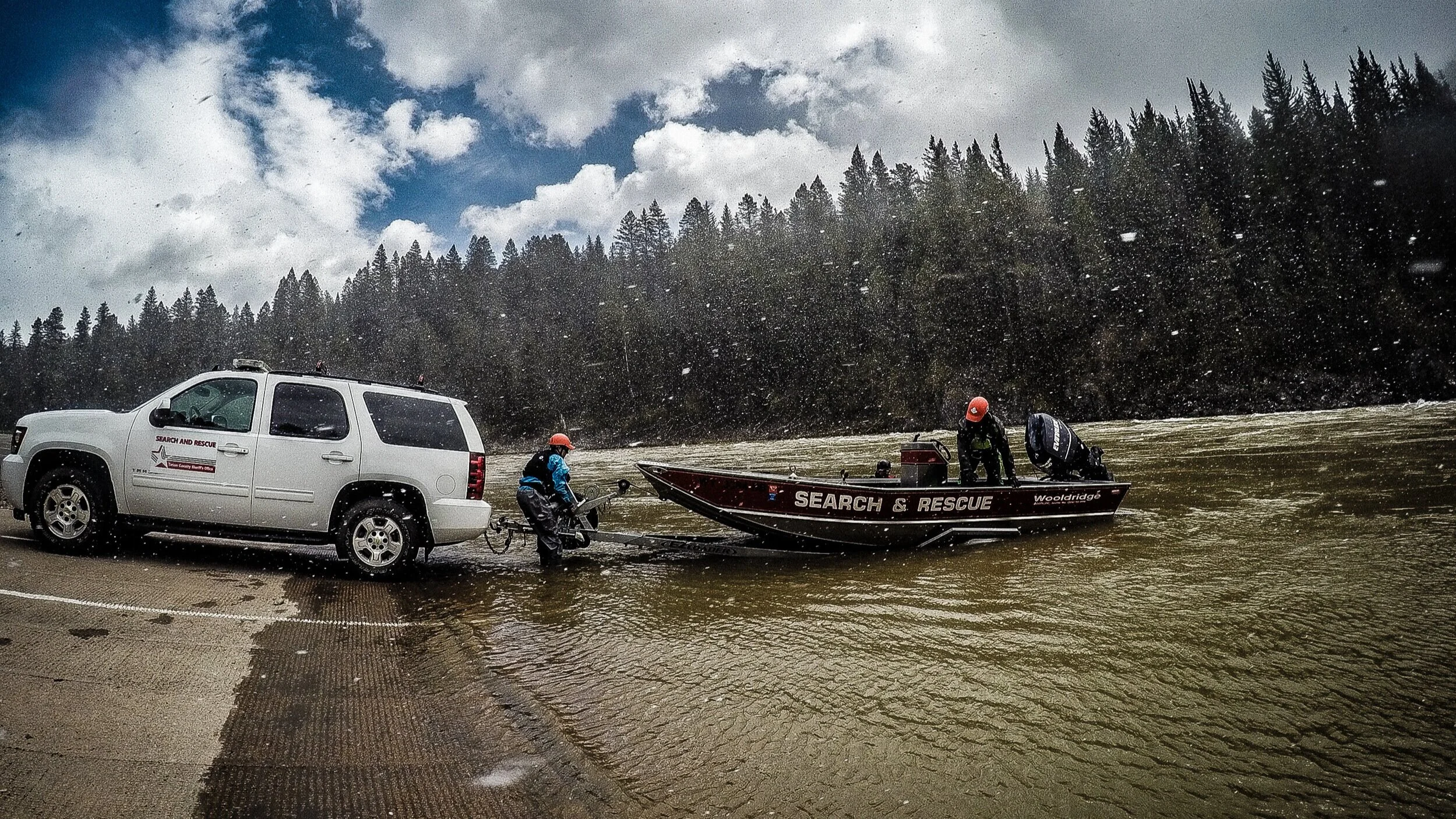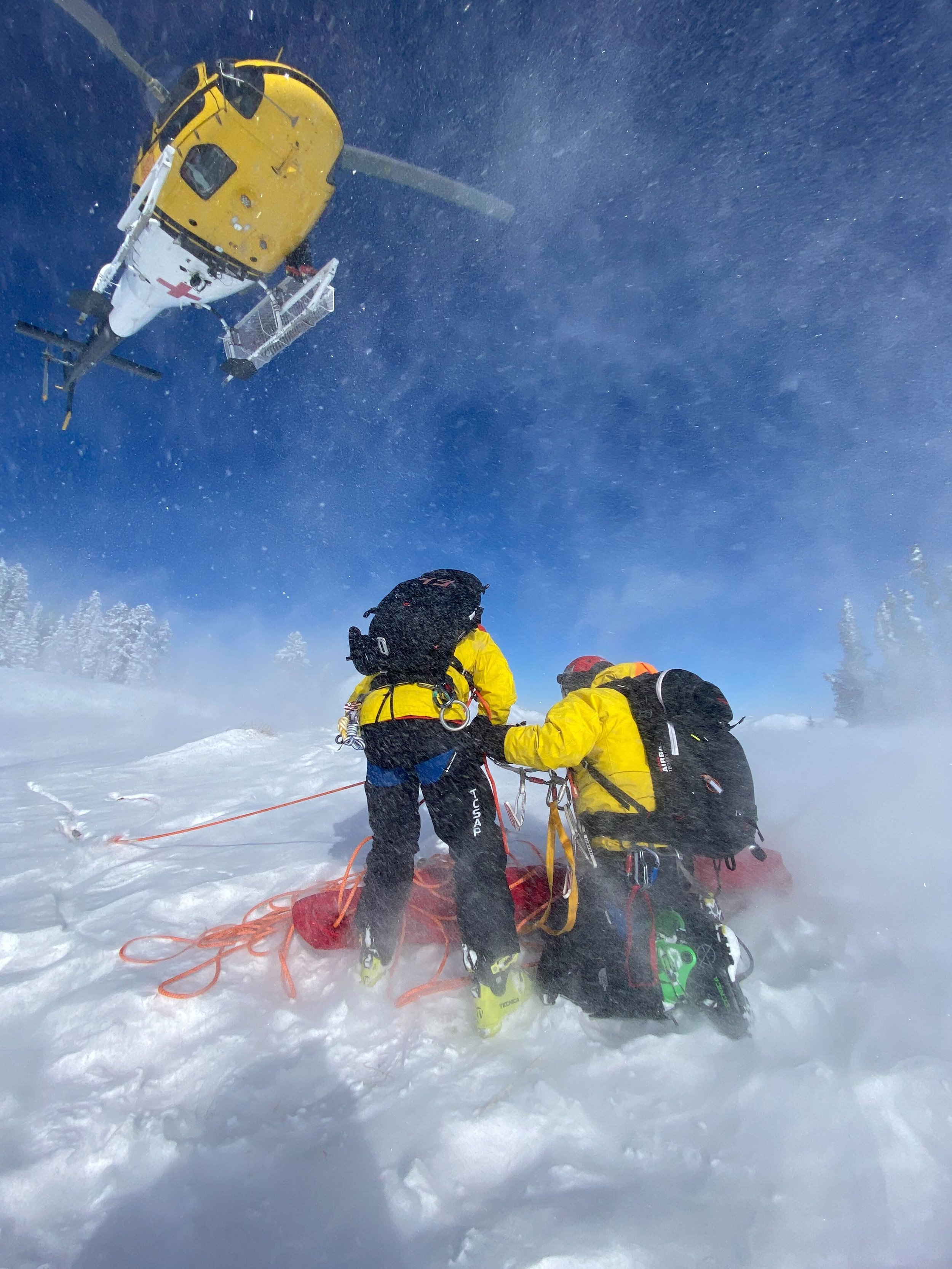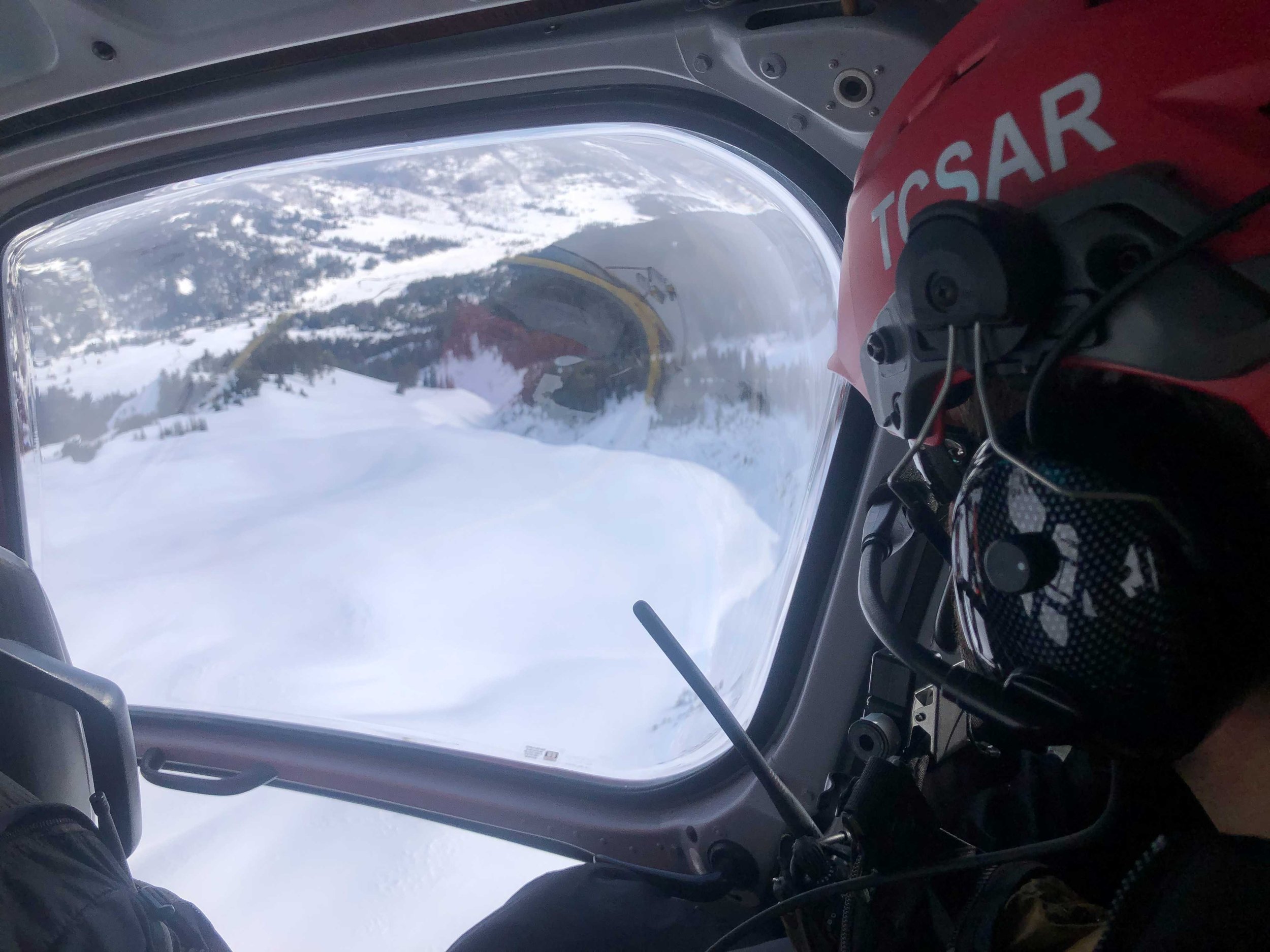Community Support for Heli-Yes! Truly Makes a Difference
On February 6, 2022, Tanner Ellis broke his C5 vertebrae during a snowmobile trip with friends on Togwotee Pass. It was the very first morning of a planned weeklong trip and Tanner, a 23-year-old from Elk River, Minn., had already completed one ‘re-entry’ on his snowmobile. A ‘re-entry’ is a trick where you drive your sled into a wheelie up a steep slope before flipping it back 180 degrees and landing in the same track on the way down.
On his second attempt, the sled fell back on top of him, ‘mousetrapping’ him beneath it. In addition to his neck injury, he also broke his tibia plateau and received a concussion (he was wearing a helmet). When he came to, he could not feel his arms or legs.
Tanner Ellis with a new sled in Pine Island, Minnesota. Courtesy photo.
We're bringing you Tanner's story as our Heli-Yes! campaign wraps up this week. The team’s rescue of Tanner was just one of more than 20 heli missions this winter. With just a few days left, we couldn't be happier to announce that with your help, we've met an anonymous local donor's $35k challenge match, putting us over $70k specifically intended for TCSAR's helicopter operations next year.
With the Teton County Sheriff's Office budgeting for eight months of on-call TCSAR helicopter service, support for Heli-Yes! means volunteers will get the flight time and training necessary to fully utilize the best tool available for saving lives in the backcountry. It truly does make a difference, and goes directly to helping people like Tanner. The team extends its sincere gratitude to everyone who donated.
"There’s no replication or substitute for a helicopter in mountain rescue,” says TCSAR Chief Advisor Cody Lockhart. “It is a vital tool for the team and the community. We’re incredibly grateful to have such great grassroots community support for this resource."
On the day of Tanner’s accident, TCSAR got the call just before noon. The team responded with a helicopter and snowmobile teams. The weather was good that day for flying, and the heli was able to land upslope from Tanner, where volunteers then skied down to him. They then loaded him into the ship for transport to an ambulance within just a few hours of his accident. Plan B would have involved a toboggan to tow him behind a snowmobile over several miles of undulating terrain, a process that would have been much lengthier and perhaps exacerbated Tanner’s injuries.
TCSAR volunteer Dr. AJ Wheeler provides patient care to Tanner Ellis on February 6, 2022. Courtesy photo.
“When the snowmobile landed on top of me, I got knocked out. Either right before or after, the craziest feeling went through my body,” Tanner says. “You can just feel everything turn off. My visor smashed over my goggles so I couldn't really see what happened and I couldn't feel anything. I couldn't move anything. The first thing I said (to my friends) when I woke up is ‘Don't touch me,’ because I knew something was real bad.”
After emergency surgery, a ton of physical therapy and determination, Tanner is now walking, going to the gym, and heading back to work next week as an apprentice lineworker. He plans to continue to ride his snowmobile, but perhaps with a wider margin for error.
"The way I see it, the helicopter was the only way I was getting out of the backcountry,” he says. “I am very thankful it was a bluebird day, and for all the help of TCSAR."
Tanner’s full story, including how TCSAR members organized the response to his injuries, will be the subject of an episode of The Fine Line podcast, scheduled for release on May 26, 2022.
Tanner, above middle, with his sisters, Madison and Kenzie, and parents, Scott and Michelle. Courtesy photo.











